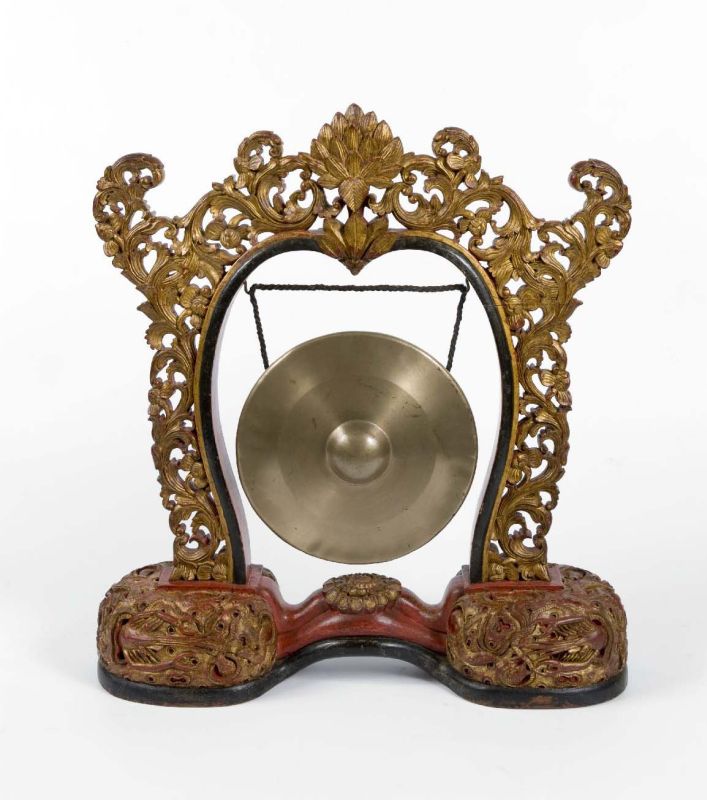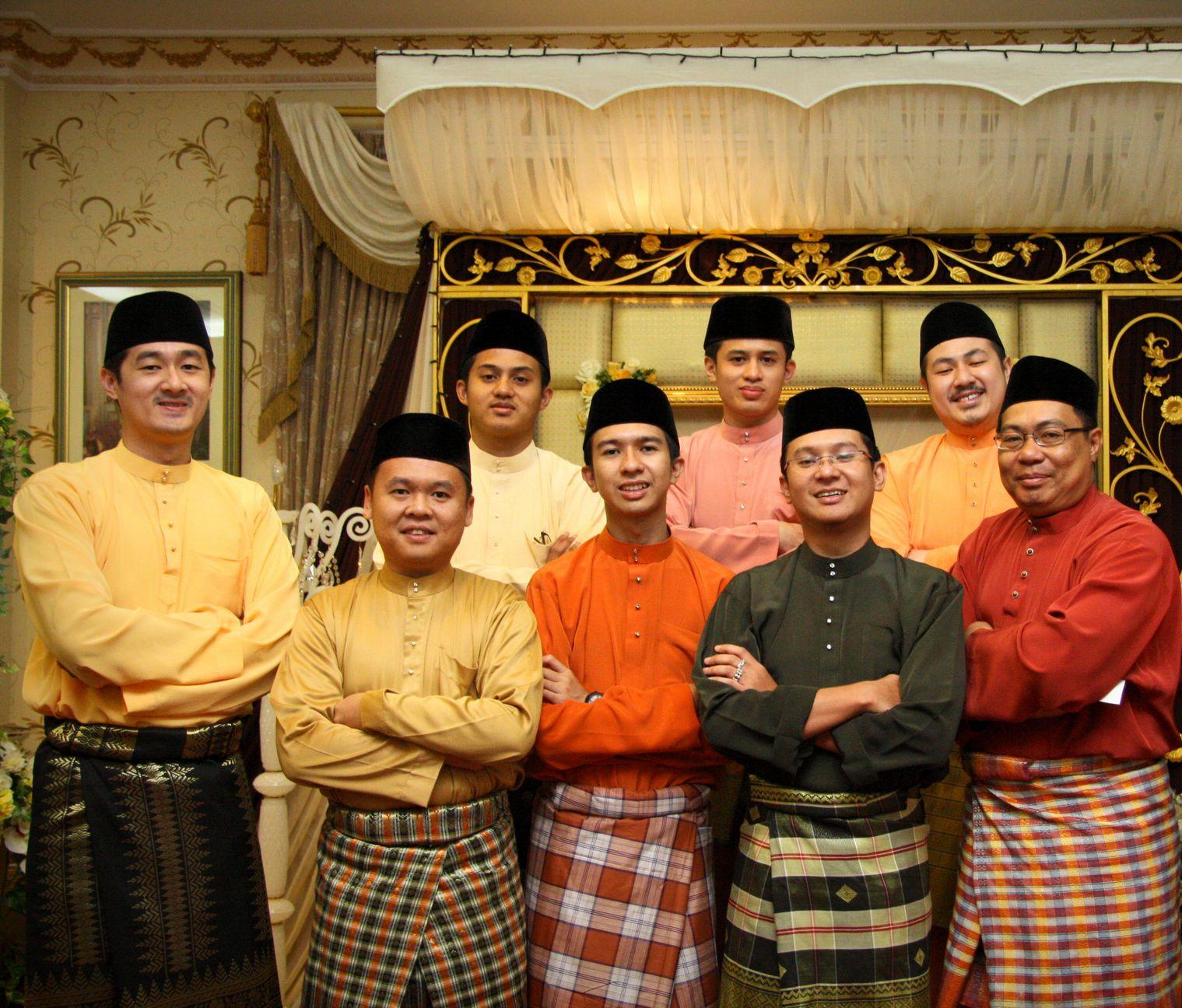|
Mek Mulung
Mek Mulung ( Jawi: مق مولوڠ) is a traditional Malay theatre that is unique to the northwest state of Kedah in Malaysia. It became popular since the late 18th century and incorporates most elements of Mak Yong, Menora and Hadrah. The theatre features a repertoire of stories from local legends, which according to a source, amounted about 20 original stories, with few of them survived today. Similar to Mak Yong, the stories are presented through dialogue, song and dance. The musicians and actors of the theatre are exclusively male, playing both male and female roles. The basic dance movements are limited, abbreviated, crude and mainly focus on the arms, especially the to-and-fro, and up and down swinging. The orchestra of Mek Mulung is predominantly percussive and consists of '' rebana'', ''gong'' and ''kecerek'' (concussion sticks). A small oboe The oboe ( ) is a type of double-reed woodwind instrument. Oboes are usually made of wood, but may also be made of synt ... [...More Info...] [...Related Items...] OR: [Wikipedia] [Google] [Baidu] |
Theatre
Theatre or theater is a collaborative form of performing art that uses live performers, usually actors to present experiences of a real or imagined event before a live audience in a specific place, often a Stage (theatre), stage. The performers may communicate this experience to the audience through combinations of gesture, speech, song, music, and dance. It is the oldest form of drama, though live theatre has now been joined by modern recorded forms. Elements of art, such as painted scenery and stagecraft such as lighting are used to enhance the physicality, presence and immediacy of the experience. Places, normally buildings, where performances regularly take place are also called "theatres" (or "theaters"), as derived from the Ancient Greek θέατρον (théatron, "a place for viewing"), itself from θεάομαι (theáomai, "to see", "to watch", "to observe"). Modern Western theatre comes, in large measure, from the theatre of ancient Greece, from which it borrows tec ... [...More Info...] [...Related Items...] OR: [Wikipedia] [Google] [Baidu] |
Hadrah
The hadra () is a collective supererogatory ritual performed by Sufi orders. It is often held on Thursday evenings after the night prayer, on Fridays after jumu'ah prayer or on Sunday evenings, and can also be celebrated on special Islamic festivals and at rites of passage. It may be held at home or in a mosque. The underlying term in Arabic literally means "Divine Presence" and the human experience of it is known as "Hudur".Chittick, William "Presence with God", page 17. The ninth annual symposium of the Muhyiddin Ibn 'Arabi Society in the USA, University of California, Berkeley, 28-29 October 1995. https://www.themathesontrust.org/papers/islam/Chittick-Presence_with_God.pdf The hadra features various forms of dhikr (remembrance), including sermons, collective study, recitation of Qur'an and other texts (especially devotional texts particular to the Sufi order (tariqa) in question, called ''hizb'' and ''wird''), religious poetic chanting, centering on praise and supplication t ... [...More Info...] [...Related Items...] OR: [Wikipedia] [Google] [Baidu] |
Malay Culture
Malays ( ; , Jawi: ) are an Austronesian ethnoreligious group native to eastern Sumatra, the Malay Peninsula and coastal Borneo, as well as the smaller islands that lie between these locations. These locations are today part of the countries of Malaysia, Indonesia (eastern and southern Sumatra, Bangka Belitung Islands, West Kalimantan and Riau Islands), the southern part of Thailand ( Pattani, Satun, Songkhla, Yala and Narathiwat), Singapore and Brunei Darussalam. There is considerable linguistic, cultural, artistic and social diversity among the many Malay subgroups, mainly due to hundreds of years of immigration and assimilation of various regional ethnicity and tribes within Maritime Southeast Asia. Historically, the Malay population is descended primarily from the earlier Malayic-speaking Austronesians and Austroasiatic tribes who founded several ancient maritime trading states and kingdoms, notably Brunei, Kedah, Langkasuka, Gangga Negara, Chi Tu, Nakhon Si Tham ... [...More Info...] [...Related Items...] OR: [Wikipedia] [Google] [Baidu] |
Pantun
''Pantun'' ( Jawi: ) is a Malayic oral poetic form used to express intricate ideas and emotions. It generally consists of an even number of lines and is based on ABAB rhyming schemes. The shortest consists of two lines, known as the in Malay, while the longest, the , can have 16 lines. is a disjunctive form of poetry that always comes in two parts: the first part is a prefatory statement called or which has no immediate logical or narrative connection with the second or closing statement called or . However, they are always connected by rhyme and other verbal associations, such as puns and repeating sounds. There is also an oblique but necessary relationship, and the first statement often serves as a metaphor for the second. The most popular forms of are the quatrain (four lines) and the couplet (two lines), which both feature prominently in literature and modern popular culture. The earliest literary records of date back to the 15th century Malacca Sultanate, althoug ... [...More Info...] [...Related Items...] OR: [Wikipedia] [Google] [Baidu] |
List Of Hikayat
''Hikayat'' (Jawi script, Jawi: حكاية; ) is an Arabic word that literally translates to "stories" and is a form of Malay language, Malay and Sikh scriptures, Sikh literature. This article presents a list of hikayat from various time periods. Overview Malay Malay hikayats relate the adventures of heroes from kingdoms across the Malay Archipelago (spanning modern Indonesia and Malaysia, especially in Sumatra) or chronicles of their royalty. The stories they contain, though based on history, are heavily romanticized. Poetical format is not required in Malay and Arabic Hikayat while the Acehnese Hikayat requires it. Sikh Hikaaitaan, Hikayats also appear in Sikh literature of the Indian subcontinent, of which 11 or 12 are associated with Guru Gobind Singh. 14th century * Hikayat Bayan Budiman Bayan 1371 (MS 1852) * Hikayat Raja-raja Pasai Pasai ±1390 (MS 1815) 15th century * Hikayat Muhammad Hanafiah MH ±1450 (MSS <1624, <1682) * Hikayat Amir Hamzah
|
Oboe
The oboe ( ) is a type of double-reed woodwind instrument. Oboes are usually made of wood, but may also be made of synthetic materials, such as plastic, resin, or hybrid composites. The most common type of oboe, the soprano oboe pitched in C, measures roughly long and has metal Key (instrument), keys, a conical Bore (wind instruments), bore and a flared bell. Sound is produced by blowing into the Reed (instrument), reed at a sufficient air pressure, causing it to vibrate with the air column. The distinctive tone is versatile and has been described as "bright". When the word ''oboe'' is used alone, it is generally taken to mean the soprano member rather than other instruments of the family, such as the bass oboe, the cor anglais (English horn), or oboe d'amore. Today, the oboe is commonly used as orchestral or solo instrument in Orchestra, symphony orchestras, concert bands and chamber music, chamber ensembles. The oboe is especially used in classical music, film music, some ge ... [...More Info...] [...Related Items...] OR: [Wikipedia] [Google] [Baidu] |
Gong
A gongFrom Indonesian language, Indonesian and ; ; zh, c=鑼, p=luó; ; ; ; ; is a percussion instrument originating from Southeast Asia, and used widely in Southeast Asian and East Asian musical traditions. Gongs are made of metal and are circular and flat or bowl-like in shape, and can come in various sizes. They are typically struck with a mallet. They can be played alone, giving a characteristic "crashing" sound, or played as part of a tuned set that produce bell-like sounds. The earliest possible depictions of gongs is from the details on the surface of the Ngọc Lũ I Dong son drum, bronze drum () from the Dong Son culture of northern Vietnam. It depicts what looks like seven-gong ensembles along with other instruments (including cymbals/bells and the bronze drums themselves). The oldest undisputed historical mention of gongs can be found in sixth century AD Chinese records, which mentioned it as a foreign instrument that came from a country between Tibet and Bur ... [...More Info...] [...Related Items...] OR: [Wikipedia] [Google] [Baidu] |
Rebana
The rebana or terbangan is a tambourine that is used in Islamic devotional music in Southeast Asia, particularly in Indonesia, Malaysia, Brunei, and Singapore. The sound of the rebana often accompany Islamic ritual such as the zikir. The name ''rebana'' came from the Arabic word ''robbana'' ("our Lord"). The ''rebana'' is also used by the Cham people of Cambodia and also gave rise to the '' Rabana'' which is used by the Sinhalese people of Sri Lanka. It is also used by the Cape Malays in Cape Town, South Africa. Cambodia The rebana is also used among the Cham and Malay ethnic groups in Cambodia. A large variation of the rebana is used in the Yike theatre of Cambodia where it is called '' skor yike'' ស្គរយីកេ (or ''yike'' drum). Indonesia Rebana in Indonesia is particularly associated with the Muslim community, such as the Ponoraganese in Java, Minang in Sumatra and the Betawi in Jakarta. Ponorogo In Ponorogo Rebana called Kompang has been around since ... [...More Info...] [...Related Items...] OR: [Wikipedia] [Google] [Baidu] |
Menora (dance)
or (, ), sometimes shortened as (, ) is Culture of Thailand, traditional Siamese theatrical, musical, and acrobatic dance performance originated from the Southern Thailand, southern regions of Thailand. Having similar plots adopted from Jataka tales of ''Manohara'', this kind of performance is related to the (ละครชาตรี), another Siamese arts performance originating from central Thailand. Over five hundred years old, is performed in Thailand's local community centres and at temple fairs and cultural events, and is passed on through training by masters in homes, community organizations and educational institutions. In Malaysia, the practice of has significantly declined since it has been banned by the government of Kelantan, which considers this kind of cultural performance as ''haram'' ( ‘forbidden’) for being involved with polytheism. In 2021, was officially recognized by UNESCO (United Nations Educational, Scientific and Cultural Organization) on ... [...More Info...] [...Related Items...] OR: [Wikipedia] [Google] [Baidu] |
Musical Theatre
Musical theatre is a form of theatre, theatrical performance that combines songs, spoken dialogue, acting and dance. The story and emotional content of a musical – humor, pathos, love, anger – are communicated through words, music, movement and technical aspects of the entertainment as an integrated whole. Although musical theatre overlaps with other theatrical forms like opera and dance, it may be distinguished by the equal importance given to the music as compared with the dialogue, movement and other elements. Since the early 20th century, musical theatre stage works have generally been called, simply, musicals. Although music has been a part of dramatic presentations since ancient times, modern Western musical theatre emerged during the 19th century, with many structural elements established by the light opera works of Jacques Offenbach in France, Gilbert and Sullivan in Britain and the works of Edward Harrigan, Harrigan and Tony Hart (theater), Hart in America. ... [...More Info...] [...Related Items...] OR: [Wikipedia] [Google] [Baidu] |
Malays (ethnic Group)
Malays ( ; , Jawi alphabet, Jawi: ) are an Austronesian peoples, Austronesian ethnoreligious group native to eastern Sumatra, the Malay Peninsula and coastal Borneo, as well as the smaller islands that lie between these locations. These locations are today part of the countries of Malaysia, Indonesia (eastern and southern Sumatra, Bangka Belitung Islands, West Kalimantan and Riau Islands), the southern part of Thailand (Pattani Province, Pattani, Satun Province, Satun, Songkhla Province, Songkhla, Yala Province, Yala and Narathiwat Province, Narathiwat), Singapore and Brunei Darussalam. There is considerable linguistic, cultural, artistic and social diversity among the many Malay subgroups, mainly due to hundreds of years of immigration and assimilation of various regional ethnicity and tribes within Maritime Southeast Asia. Historically, the Malay population is descended primarily from the earlier Malayic languages, Malayic-speaking Austronesians and Austroasiatic languages, Au ... [...More Info...] [...Related Items...] OR: [Wikipedia] [Google] [Baidu] |







